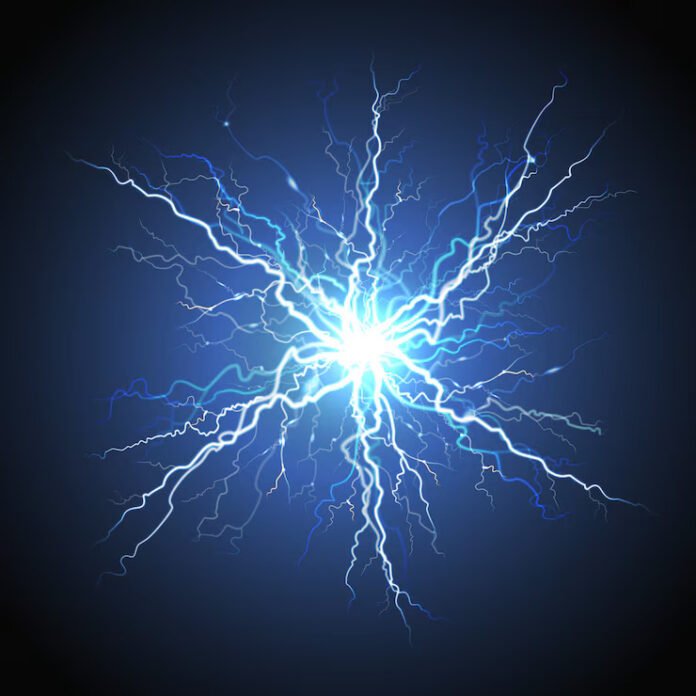Introduction
Electric current is an indispensable part of our daily lives. We cannot imagine or live in our world without an electric current. Electricity is used everywhere, from charging our phones to lighting our houses to washing and ironing our clothes to the use of kitchen appliances to the running of mega factories and offices.
It is one of the greatest achievements of mankind, and we usually take it for granted without pondering what electric current is. How does it work and how is it measured? What is the concept behind it? The unit of electric current is the ampere (A). Let’s find out.
Define electric current
In simple words, electric current can be defined as the flow of charges. Atoms are the smallest and most basic element of any matter. It consists of three particles: a proton, a neutron, and an electron. Charges are carried by these particles: proton (+) positive charge, neutron neutrality, and electron (-) negative charge. A free electron flows from one atom to another and repels an electron in it, replacing it because of the electrostatic force that operates between the charges.
The repelled electron, now free, now flows to another atom and performs the same function, and so on and so forth. Thus, this continuous flow of electrons leads to the generation of electric current. One important reminder is that the flow of electric current is considered to be in the opposite direction of the flow of electrons. If electrons flow in the right direction, then electric current will flow in the left direction.
Conductors
Conductors are materials in which electric current flows easily, i.e., the electrons move easily without resistance. Copper, silver, and gold are examples of materials that are good conductors.
Unit of electric current
electric current is the rate of flow of an electric charge. It denotes the amount of charge (Q) that flows in one unit of time (T) in a given area. A unit of electric current is denoted by (I).
I = Q/T
Electric Current = NetCharge/Time
The SI unit of current is the ampere (A). Coulombs (C) are used to measure net charge, and seconds (S) are used to measure time.
1 Ampere = 1 Coulomb /1 Second
Example: A 36 C of net charge flows in a circuit in 2 minutes. Find the current.
Solution:
According to the problem,
Time = 2 minutes, net charge = 36 C.
First, we must convert time to a standard unit, such as a second.
2 min = 2 * 60s = 120s
now, we can simply evaluate it by dividing the net charge by the given time.
Thus, I = 36C/120s = 0.3A.
0.3 amps is the current.
Electric Potential Difference
Electric potential difference is the work done to transfer one unit of charge from one point to another in an electric circuit. Electric potential difference is also known as Voltage.
Potential Difference Between two Points V = Work done W/ Charge Q
Work done is measured in Joules (J) and Charge is measured in Coulomb (C). The SI unit of potential difference is Volt (V)
1 Volt = 1 Joule/ 1 Coulomb
Example: What is the potential difference if 50J OF work is done for a charge of 20C?
Solution:
According to the problem,
Work done is 50J and the Charge is 20C.
Now, we evaluate by dividing work done by charge.
V = 50J/20C = 2.5V
The potential difference is 2.5 Volt.
Ohm’s Law
Ohm’s law states that the electric current (I) flowing through a conductor is directly proportional to the potential difference (V), assuming the physical condition remains constant.
I∝V
Introducing constant Resistance (R) to the equation –
I = V/R OR V = I*R
Resistance is measured in Ohm Ω. Resistance controls the flow of current. An increase in resistance leads to a decrease in the flow of current and vice versa.
R∝1/I
Example: If the resistance of the heater is 65 Ω and a potential difference is 200 V. Find the current.
Solution:
According to the problem
Resistance is 65 Ω and voltage is 200V.
Putting the value in the equation, we find
I = 200V/65Ω
I=3.07A
Thus, the current is 3.07 Ampere.
Electric Resistivity
Electric Resistivity is the fundamental property of materials, which measures the amount of resistance to electric current they pose. The resistivity of a conductor depends on the material of the conductor. Resistivity is represented by the Greek word. The ohm-meter is the SI unit of electric resistivity.
R= ρl/A
Where R is resistance, ρ is constant proportionality or resistivity, l is conductor length, and A is conductor cross-sectional area
Resistors are connected in a circuit in two ways: series and parallel. A “series” is formed when resistors are connected in a single line. Here, the resistance is higher and the current flow is lower.
A parallel connection is formed when resistors are connected in parallel lines, that is when multiple lines are placed in parallel and have both ends in common. Here, the resistance is low and the current flow is high.
Recommended Articles:
Unit of Moment of Inertia
Unit of Inductance: Definition and Types
Light with multiple Measuring Units
Magnetic Flux and its Measuring Units
Watt-Unit of Power
Electric current is the flow of electrons in a circuit. It is calculated by dividing the net charge (Coulomb) by time (Seconds). Ampere (A) Coulomb (C) Conductors are materials that allow the flow of electric current. Potential charge or voltage is the work done to transfer one unit of charge from one point to another. Ohm’s law states that electric current is directly proportional to the potential difference when passed through a conductor, provided that the physical condition remains constant.Unit of Electric Current FAQs
What is electric current and how is calculated?
The SI unit of electric current is?
Charge is measured in?
What are Conductors?
What is the potential difference and how is calculated?
State the postulates of Ohm’s Law state?
